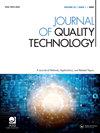多级和混合级过饱和设计的最佳实践
IF 2.2
2区 工程技术
Q2 ENGINEERING, INDUSTRIAL
引用次数: 1
摘要
摘要过饱和设计在大量潜在因素中识别重要因素具有成本效益,从而使其具有价值。目前的文献研究了此类设计的几种设计选择标准和分析方法。对于两级设计,在不同优化准则下构建的优化设计的筛选效果基本相似,尤其是在影响方向未知的情况下。Gauss-Dantzig选择器(GDS)是双水平设计的首选分析方法。对于多级和多级过饱和设计,尽管存在多种设计最优准则和设计施工方法,但文献对设计选择和分析方法的选择都缺乏指导。通过大量的模拟研究,我们表明,使用不同最优准则构建的多水平和混合水平设计对于未知的影响方向具有相同的筛选性能。对于已知的效应方向,广义最小像差优化设计的筛选性能略好。然而,在分析方面,情况不同于两级设计。虽然LASSO和GDS在分析方法中表现出较好的性能,但它们依赖于参数化或因子编码。由于没有单一的参数化选择是跨稀疏级别、场景和设计的最佳选择,我们建议使用组LASSO,它对参数化是不变的。最后,我们根据运行次数、因素和效果稀疏度来描述设置,这些设置太复杂,无法从组LASSO中获得有意义的结果。关键词:分组lassoma主要效应混合水平筛选实验三水平过饱和设计披露声明作者未报告潜在利益冲突。数据可用性声明数据可用性不适用于本文,因为本研究中没有创建或分析新的数据。其他信息:贡献者说明srakhi SinghDr。Rakhi Singh是美国纽约宾厄姆顿大学数学与统计系的助理教授。她在孟买印度理工学院和澳大利亚莫纳什大学的联合博士项目中获得了数学博士学位(主修统计学)。她还在多特蒙德理工大学和格林斯博罗北卡罗来纳大学做了几年博士后。主要研究方向为实验设计与分析、高维数据子数据选择。本文章由计算机程序翻译,如有差异,请以英文原文为准。
Best practices for multi- and mixed-level supersaturated designs
AbstractSupersaturated designs offer cost-effective efficacy in discerning significant factors among a vast array of potential factors, thereby rendering them valuable. The current literature studies several design selection criteria and analysis methods for such designs. For two-level designs, the screening performance of optimal designs constructed under different optimality criteria remains similar, especially when the effect directions are not known in advance. The Gauss-Dantzig Selector (GDS) is the preferred analysis method for two-level designs. For the multi- and mixed-level supersaturated designs, despite the existence of multiple design optimality criteria and design construction methods, the literature lacks guidance for both the design selection and the choice of analysis method. Through extensive simulation studies, we show that the multi- and mixed-level designs constructed using different optimality criteria have equivalent screening performance for the unknown effect directions. For known effect directions, generalized minimum aberration-optimal designs have slightly better screening performance. On the analysis front, however, the story differs from two-level designs. While LASSO and GDS show superior performance among the analysis methods compared, they depend on the parameterization or the coding of factors. Since no single choice of parameterization is best across sparsity levels, scenarios, and designs, we propose using group LASSO, which is invariant to parameterizations. Finally, we characterize the settings in terms of the number of runs, factors, and the effect sparsity, which are too complex to get meaningful results from group LASSO.Keywords: group LASSOmain effectsmixed-levelscreening experimentsthree-level supersaturated design Disclosure statementNo potential conflict of interest was reported by the authors.Data availability statementData availability is not applicable to this article as no new data were created or analyzed in this study.Additional informationNotes on contributorsRakhi SinghDr. Rakhi Singh is an Assistant Professor in the Department of Mathematics and Statistics at Binghamton University in New York, USA. She did her PhD in Mathematics (with specialization in Statistics) under a joint PhD program between Indian Institute of Technology Bombay and Monash University, Australia. She also did a postdoc for a couple of years at TU Dortmund and UNC Greensboro. Her primary research areas are design and analysis of experiments and subdata selection for high-dimensional data.
求助全文
通过发布文献求助,成功后即可免费获取论文全文。
去求助
来源期刊

Journal of Quality Technology
管理科学-工程:工业
CiteScore
5.20
自引率
4.00%
发文量
23
审稿时长
>12 weeks
期刊介绍:
The objective of Journal of Quality Technology is to contribute to the technical advancement of the field of quality technology by publishing papers that emphasize the practical applicability of new techniques, instructive examples of the operation of existing techniques and results of historical researches. Expository, review, and tutorial papers are also acceptable if they are written in a style suitable for practicing engineers.
Sample our Mathematics & Statistics journals, sign in here to start your FREE access for 14 days
 求助内容:
求助内容: 应助结果提醒方式:
应助结果提醒方式:


